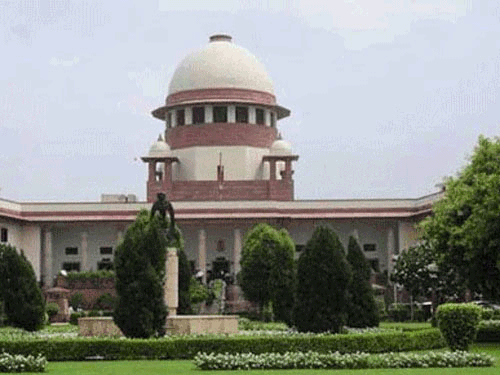
The State Cabinet’s decision to ban the manufacture and use of various kinds of plastic items comes in the wake of the Supreme Court monitoring the implementation of the ban on sale and use of thin plastic carry bags.
Plastic turning out to be a major problem at garbage processing units, especially in BBMP limits, was another major factor that prompted the Cabinet decision, sources said.
The Cabinet on Tuesday took a decision to ban manufacture, supply, storage, transportation, sales, distribution and use of nearly a dozen kinds of plastic items including banners, buntings, flags, flexes, plates, thermocol cups, spreading sheets among others.
Plastic carry bags with thickness below 40 microns have already been banned in the State since 2011. Ii is another matter that the ban has not been effectively implemented. Last year, the Supreme Court - based on a PIL - had pulled up the State for not taking effective steps to ban thin plastic covers. The Karuna Society for Animals and Nature, in its petition, had stated that the ban not being enforced had become a hazard for grazing animals. The newly constituted Social Justice bench of the Supreme Court is now monitoring the case.
The government will soon come out with a draft notification banning 13 items. “We will come out with the notification and invite objections and suggestions. After this, we will come out with the rules for implementation,” Transport Minister Ramalinga Reddy said.
“The issue of banning certain plastic items was first placed before the Cabinet in June this year, but was postponed for various reasons,” Reddy said.
He said that the rules will demarcate the roles and responsibilities of producers, waste generators, urban local bodies and gram panchayats in implementing the ban.
A decision to go ahead with the ban was initially taken at a meeting chaired by Chief Minister Siddaramaiah on garbage disposal in BBMP limits a few months back.
He is said to have directed the forest, ecology, environment department to come out with a draft notification.
Plastic manufacturers are planning to file objections once the draft notification is out. “It is not a practical and universal solution. It can be implemented in select areas, say parks, temples, etc. Delhi tried to implement a total ban on carry bags, but failed,” says B A Nazeer, president of the Canara Plastic Manufacturers and Traders Association.
In 2013, the Dakshina Kannada district administration enforced a total ban on plastic bags, but the same has been stayed by court, Nazeer said.
These face axe
*Plastic carry bags
*Banners
*Buntings
*Flexes
*Plates
*Flags
*Cups
*Sheets (used for spreading on dining table)
*Thermocol plates
*Thermocol cups
Where plastic is allowed
In nurseries, dairy industry, health sector and any sector for non-consumptive use
Actions taken after the Plastic Waste (Management and Handling) Rules 2011 came into effect on February 7, 2011, overruling 1999 rules.
*Plastic under 20 microns banned all over the country.
*Many states and city corporations (Delhi, Mumbai, Hyderabad) issued orders banning
anything beyond 40 microns.
*Implementation is always a problem. Some checking is done generally on manufacturers and big retailers like Big Bazar. But who checks small players?
*Thicker bags also mean easier separation for rag-pickers. And even for mechanical
separation, if it exists.
*The rules also have provisions on
Extended Producers’ Responsibility, which says the municipal authority may ask manufacturers – either collectively or individually – to provide the required finance to establish plastic waste collection centres. But the provision is implemented in a very lenient way, allowing the manufacturers to defy the law easily.
*Carrying a non-plastic bag to market is the best option, but how many of us do that?
*Difference in size means difference in cost. A 40-micron bag would cost about Rs 2. A 20-micron bag 10 paise. Several municipal authorities (BBMP included) in the past imposed minimum prices for consumers insisting on plastic bags.